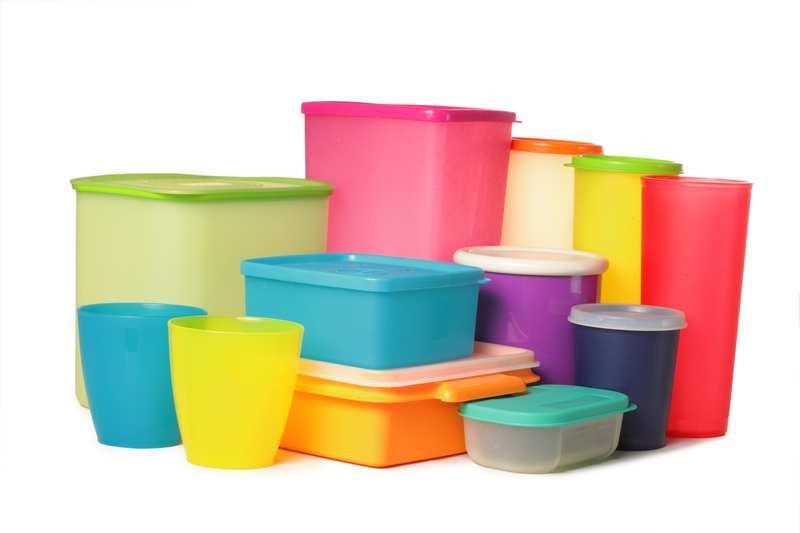Practical Ways to Cut Waste in Your Home
Cutting waste at home has become crucial not only for saving money but also for protecting the environment. Whether you're motivated by eco-consciousness or by the desire to live more efficiently, finding ways to reduce waste in your household can be both satisfying and impactful. In this comprehensive guide, explore practical ways to reduce waste at home, creative strategies to reuse and recycle, and actionable tips to create a more sustainable lifestyle for you and your family.

Why Focus on Waste Reduction at Home?
Many of the items we throw away end up in overflowing landfills or oceans, threatening wildlife and contributing to pollution. By actively looking for ways to cut down on household waste, we can help create a cleaner planet while benefitting from a more organized, efficient, and cost-saving household.
Key reasons to reduce home waste:
- Save money by reusing and repurposing items
- Lower your environmental footprint
- Promote a sustainable lifestyle
- Decrease clutter and enhance living space
- Set a good example for children and neighbors
Examining the Main Sources of Household Waste
Understanding where most household waste comes from is the first step in reducing it. Here are common areas where waste tends to accumulate:
- Food and kitchen scraps
- Packaging (plastic, cardboard, glass, etc.)
- Paper waste (mail, magazines, receipts)
- Single-use products (plates, cups, shopping bags)
- Old clothing and textiles
- Household hazardous waste (batteries, electronics, lightbulbs)
By identifying these areas, you can focus your waste reduction efforts for maximum impact.
Kitchen and Food Waste Reduction Strategies
Better Shopping Habits: Buy Only What You Need
An effective way to cut waste in your home is to be mindful when shopping. Plan your meals before heading to the grocery store and create a shopping list based on real needs. This practice helps avoid impulse purchases and reduces the risk of buying unnecessary products that may go to waste.
- Stick to your shopping list and avoid overbuying
- Choose products with minimal or recyclable packaging
- Buy in bulk to reduce packaging waste when practical
Proper Food Storage and Smart Organization
Storing food correctly can extend its life and significantly minimize household waste. Keep your fridge organized and use airtight containers to preserve freshness.
- Use clear, resealable containers to easily see leftovers
- Adopt the "first in, first out" rule--use older foods before newer ones
- Label containers with dates to track freshness
Creative Ways to Use Leftovers
Instead of tossing out uneaten food, get creative with leftovers! Transform yesterday's meals into new dishes or freeze for later. A few practical examples:
- Turn leftover vegetables into soups or stir-fries
- Freeze overripe fruit for smoothies or baking
- Use stale bread for breadcrumbs or croutons
Home Composting
Composting is one of the most eco-friendly steps you can take to cut kitchen waste at home. By diverting food scraps from the trash, you reduce landfill contributions and create nutrient-rich soil for gardening.
- Compost fruit and vegetable peels, coffee grounds, eggshells, and yard waste
- Avoid meat, dairy, and oily foods in standard compost bins
- Start with a small compost pail in your kitchen for convenience
Reducing Packaging and Single-Use Product Waste
Choose Reusable Alternatives
Opt for reusable products whenever possible to eliminate single-use waste. Some simple swaps make a big difference:
- Bring your own reusable bags when shopping
- Use cloth napkins rather than disposable paper towels
- Switch to refillable water bottles and coffee mugs
- Store food in glass or stainless steel containers instead of plastic wrap
Buy in Bulk and Use Refill Stations
Many stores now offer bulk food options and refill stations for household products. Buying in bulk eliminates excess packaging and lets you purchase only the amounts you need.
- Shop at zero-waste or bulk stores for rice, grains, nuts, and spices
- Refill cleaning and personal care products like detergents and shampoos
Say No to Unnecessary Packaging
If bulk buying isn't available, make conscious choices in your regular grocery store:
- Select items sold loose over those wrapped in plastic
- Choose products in glass or metal, as these have higher recycling rates than plastic
- Support brands with sustainable or minimal packaging
Paper and Mail: Reduce, Reuse, and Recycle
Go Digital Where Possible
Switch to online statements, e-receipts, and digital subscriptions. Reducing paper use is a practical way to cut waste at home and save space:
- Sign up for paperless billing with your utility and service providers
- Unsubscribe from unwanted catalogs and junk mail
- Read news and magazines on your device rather than in print
Reuse and Recycle Paper Products
When you must use paper, try to reuse it before recycling:
- Use the blank side of printed pages for notes or lists
- Shred paper for packing material or composting
- Recycle magazines, newspapers, and envelopes regularly
Clothing and Textile Waste Solutions
Buy Less, Choose Well
Fashion is a significant waste generator. Be thoughtful when purchasing new clothes--invest in quality over quantity, and favor timeless pieces over fast fashion.
- Shop at thrift stores or clothing swaps
- Repair, rather than throw away, damaged clothing
- Organize a clothing exchange with friends or family
Repurpose and Donate
Instead of discarding old clothing or linens:
- Turn worn fabrics into cleaning rags
- Donate gently used items to charities or shelters
- Repurpose t-shirts into bags or quilts
Smart Waste Management: Recycling and Hazardous Materials
Know What Can Be Recycled
Many communities have specific guidelines for recycling. Proper sorting can maximize your home's waste reduction while supporting local recycling programs.
- Rinse containers before recycling to avoid contamination
- Learn which plastics, metals, and papers are accepted locally
- Flatten cardboard boxes to save space
Responsible Disposal of Hazardous Waste
Items like batteries, electronics, paint, and expired medications should never go in regular trash. Check for local collection points and community hazardous waste days for safe disposal.
- Find e-waste recycling locations for old phones and gadgets
- Take used lightbulbs and batteries to designated drop-off points
- Don't pour chemicals or medication down the drain
Eco-Friendly Cleaning and Maintenance
Make Your Own Cleaning Solutions
Homemade cleaners--using ingredients like vinegar, baking soda, and lemon--can cut waste and reduce your exposure to toxins. Store in reusable spray bottles for repeated use.
Refill, Reuse, and Repair
Maintain household items to extend their life. Refilling printer ink, restoring tools, or repairing electronics keeps items out of landfills and further cuts waste at home.
- Sharpen knives and garden tools instead of replacing
- Patch up leaky hoses and worn furniture
- Repair small appliances or donate for parts
Family and Community Involvement
Educate and Engage Your Household
Getting the whole family involved creates lasting habits around waste reduction at home. Make recycling easy and fun for kids, set up clear waste stations, and involve everyone in meal planning and shopping.
- Use charts or reminders to reinforce sorting and composting
- Assign tasks like taking out compost or bringing reusable bags
- Reward eco-friendly behaviors with family activities or treats
Connect with Local Sustainability Initiatives
Many communities offer programs focused on waste reduction. Find neighborhood swap events, participate in local clean-up drives, or join online eco-groups to stay inspired.
Advanced Tips for Cutting Waste in Your Home
- Install a water filter to eliminate bottled water waste
- Grow herbs or vegetables in your yard or windowsill to cut packaging waste
- Switch to digital gifting (e-cards, digital gift cards) for special occasions
- Use a capsule wardrobe to streamline clothing choices
- Share or rent rarely used tools and appliances with neighbors
- Conduct regular "waste audits" by examining your garbage to identify new areas to cut back

The Benefits of Reducing Home Waste
As you implement these practical strategies to cut waste at home, you'll notice a range of benefits beyond reducing your household trash:
- Financial Savings - Lower spending on disposables and duplicate items
- Healthier Home - Fewer toxins and chemicals from disposable products and cleaners
- Greater Organization - Less clutter creates a calmer, more efficient living space
- Bigger Environmental Impact - Every little change contributes to a larger, positive effect on our planet
Conclusion: Start Small, Make Big Impact
It can feel overwhelming to overhaul your entire household at once. The best approach is to start with one or two practical waste-reduction ideas and build from there. Each wasted item saved, each new sustainable habit formed, moves you closer to a zero-waste lifestyle--and sets an inspiring example for those around you. Remember, cutting waste in your home is a journey, not a destination. The important thing is to keep moving forward and celebrate your progress along the way!
By following these comprehensive, practical tips for minimizing waste in your home, you'll be well on your way to a cleaner, greener, and more sustainable household for years to come.